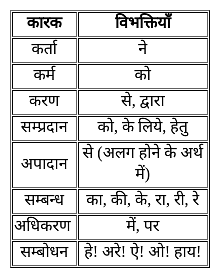HTET PRT Mock Test - 2 - HTET MCQ
30 Questions MCQ Test - HTET PRT Mock Test - 2
Which one of the following is a form of Sternberg's triarchic theory of intelligence?
In order to help a mentally challenged child in your class, which of the following strategies would you adopt?
| 1 Crore+ students have signed up on EduRev. Have you? Download the App |
Determinants of individual differences in human beings relate to
In the context of higher education, National Education Policy 2020 has emphasized the need for
Which of the following is not an example of an Assessment of learning?
निम्नलिखित प्रश्न में चार विकल्पों में से, उस विकल्प का चयन करें जो दिए गए लोकोक्ति का सही अर्थ वाला विकल्प हो।
खेती पाती बीनती और घोड़े की तंग, अपने हाथ सम्भालिये चाहें लाख लोग होय संग-
Select the correct option in order to complete the analogy.
Flower : Bud :: Plant : ?
A seller marked an article 60% above the cost price and earned a profit of 25%. What percentage discount does he allow on the article?
While working with 100% of his efficiency a man can complete a work in 20 days. In how many days can he complete the work while working with 25% efficiency?
A shopkeeper sold an article for Rs. 5,640 and gained 50%. At what price should he sell it to gain 75%?
Find the value of x and y from the figure. Find value of y

A pond 100 m in diameter is surrounded by a circular grass walk-way 2 m wide. How many square metres of grass is the on the walk-way?
ABC is an isosceles triangle such that AB = AC and ∠B = 35°. AD is the median to the base BC. Then ∠BAD is:
A green building
i) uses minimum amount of energy
ii) generates waste
iii) consumes a lot of water
iv) conserves natural resources
v) creates space for healthy living
Choose the correct statements from the options given below:
These are the methods of water conservation, identity which of these are the right process for conservation -
1. Using drip irrigation by farmers.
2. Rainwater is collected by pipes and stored in tanks.
3. Using more water to clean the toilets and washrooms.
4. Water saving habits are introduced to small children.
The process of converting ammonia into nitrates is called:



























